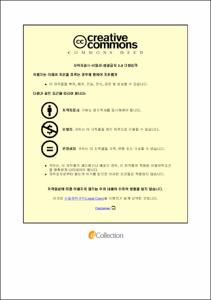비뇨기과 수술 후 도뇨관 삽입과 연관된 방광 불편감을 예방하기 위한 새로운 방법: 케토로락 혹은 마그네슘 투여
- Abstract
- Introduction
Catheter-related bladder discomfort (CRBD) is common in patients with urinary bladder catheters and is accompanied by postoperative agitation, poor patient satisfaction, extended hospital stays, and increased workload for medical staff. CRBD occurs because of the involuntary bladder smooth muscle contractions caused by various factors such as muscarinic receptor activation or inflammation-induced prostaglandin (PG) production. Ketorolac is an anti-inflammatory drug that decreases PG by cyclooxygenase inhibition. Moreover, magnesium can decrease smooth muscle contraction by the active transport of calcium ions across the cell membranes. Thus, ketorolac or magnesium administration is believed to prevent CRBD. However, the preventive effect of ketorolac or magnesium on postoperative CRBD has not been studied. Therefore, the author aimed to evaluate new approaches to prevent CRBD after urologic surgery by ketorolac or magnesium administration, as explained in the following two parts
Part I
Objective: The author evaluated the effect of ketorolac on the prevention of CRBD in patients undergoing robot-assisted laparoscopic radical prostatectomy (RALP).
Methods: All patients were randomly allocated to the ketorolac group (n = 66) or the control group (n = 66). The primary outcome was CRBD above a moderate grade at 0 hours postoperatively. CRBD above a moderate grade at 1, 2, and 6 hours was also assessed. Postoperative pain, opioid requirement, ketorolac-related complications, patient satisfaction, and hospitalization duration were also assessed.
Results: The incidence of CRBD above a moderate grade at 0 hours postoperatively was significantly lower in the ketorolac group (14 [21.5%] vs. 33 [50.8%], P = 0.001, relative risk [RR] = 0.424, 95% CI: 0.252–0.715, absolute risk reduction [ARR] = 0.29, number needed to treat [NNT] = 3) as were those at 1, 2, and 6 hours. Pain scores at 0 and 1 hours and opioid requirement over 24 hours were significantly lower in the ketorolac group, while patient satisfaction scores were significantly higher in the ketorolac group. Ketorolac-related complications and hospitalization duration were not significantly different between the two groups.
Conclusion: This study shows ketorolac can reduce postoperative CRBD above a moderate grade and increase patient satisfaction in patients undergoing RALP, suggesting it is a useful option to prevent postoperative CRBD.
Part II
Objective: The author evaluated that among patients having transurethral resection of bladder tumor (TURB), magnesium will reduce the incidence of postoperative moderate-to-severe CRBD.
Methods: In this double-blind, randomized study, patients were randomly allocated to the magnesium group (n = 60) or the control group (n = 60). In the magnesium group, a 50 mg/kg loading dose of intravenous magnesium sulfate was administered for 15 minutes, followed by an intravenous infusion of 15 mg/kg/h during the intraoperative period. Patients in the control group similarly received normal saline. The primary outcome was the incidence of CRBD above a moderate grade at 0 hours postoperatively. None, mild, moderate, and severe CRBD at 1, 2, and 6 hours postoperatively, patient satisfaction, and magnesium-related adverse effects were also assessed
Results: The incidence of CRBD above a moderate grade at 0 hours postoperatively was significantly lower in the magnesium group than in the control group (13 [22%] vs. 46 [77%], P <0.001, RR = 0.283, 95% CI: 0.171–0.467, ARR = 0.55, NNT = 2); similar results were observed for CRBD above a moderate grade at 1 and 2 hours postoperatively (5 [8%] vs. 17 [28%], P = 0.005, RR = 0.294, 95% CI = 0.116–0.746, and 1 [2%] vs. 14 [23%], P <0.001, RR = 0.071, 95% CI = 0.010–0.526, respectively). Patient satisfaction on a scale from 1–7 was significantly higher in the magnesium group than in the control group (5.1±0.8 vs. 3.5±1.0, P <0.001, 95% CI = 1.281–1.919). Magnesium-related adverse effects were not significantly different between the groups.
Conclusion: Magnesium reduced the incidence of CRBD above a moderate grade and increased patient satisfaction among patients having transurethral resection of bladder tumor.
- Issued Date
- 2021
- Awarded Date
- 2021-02
- Type
- Dissertation
- Alternative Author(s)
- Jun-Young Park
- Affiliation
- 울산대학교
- Department
- 일반대학원 의학과
- Advisor
- 김영국
- Degree
- Doctor
- Publisher
- 울산대학교 일반대학원 의학과
- Language
- eng
- Rights
- 울산대학교 논문은 저작권에 의해 보호받습니다.
- Appears in Collections:
- Medicine > 2. Theses (Ph.D)
- 파일 목록
-
-
Download
 200000366477.pdf
기타 데이터 / 2.67 MB / Adobe PDF
200000366477.pdf
기타 데이터 / 2.67 MB / Adobe PDF
-
Items in Repository are protected by copyright, with all rights reserved, unless otherwise indicated.